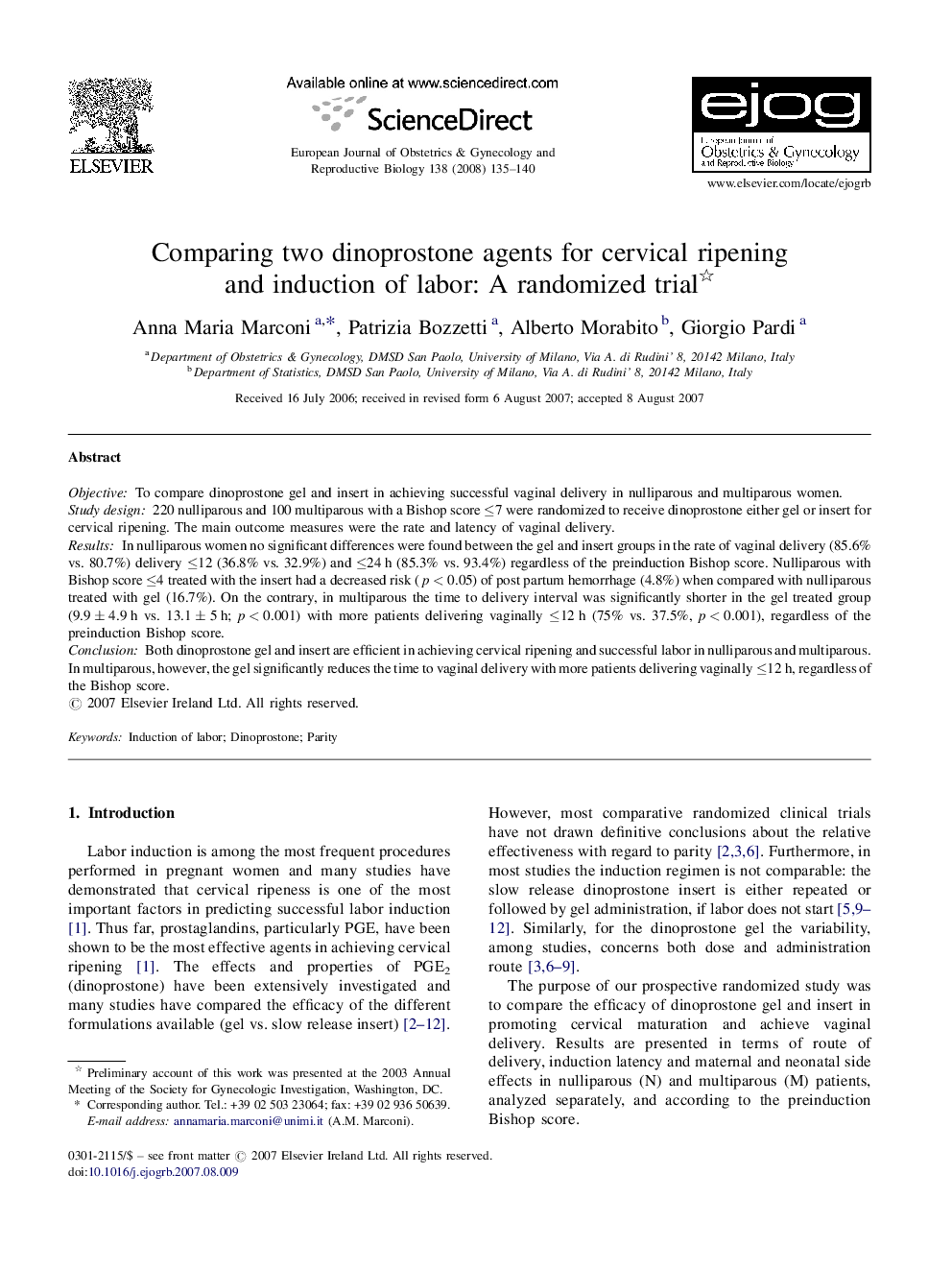| Article ID | Journal | Published Year | Pages | File Type |
|---|---|---|---|---|
| 3921800 | European Journal of Obstetrics & Gynecology and Reproductive Biology | 2008 | 6 Pages |
ObjectiveTo compare dinoprostone gel and insert in achieving successful vaginal delivery in nulliparous and multiparous women.Study design220 nulliparous and 100 multiparous with a Bishop score ≤7 were randomized to receive dinoprostone either gel or insert for cervical ripening. The main outcome measures were the rate and latency of vaginal delivery.ResultsIn nulliparous women no significant differences were found between the gel and insert groups in the rate of vaginal delivery (85.6% vs. 80.7%) delivery ≤12 (36.8% vs. 32.9%) and ≤24 h (85.3% vs. 93.4%) regardless of the preinduction Bishop score. Nulliparous with Bishop score ≤4 treated with the insert had a decreased risk (p < 0.05) of post partum hemorrhage (4.8%) when compared with nulliparous treated with gel (16.7%). On the contrary, in multiparous the time to delivery interval was significantly shorter in the gel treated group (9.9 ± 4.9 h vs. 13.1 ± 5 h; p < 0.001) with more patients delivering vaginally ≤12 h (75% vs. 37.5%, p < 0.001), regardless of the preinduction Bishop score.ConclusionBoth dinoprostone gel and insert are efficient in achieving cervical ripening and successful labor in nulliparous and multiparous. In multiparous, however, the gel significantly reduces the time to vaginal delivery with more patients delivering vaginally ≤12 h, regardless of the Bishop score.
